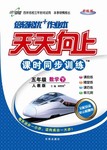题目内容
A. Eco-tourism Creates a False Impression
B. Merits and Demerits of Eco-tourism
C. Doubts about Benefits of Eco-tourism
D. Eco-tourism Leads to Romantic Destruction
E. Eco-tourism Is Environmentally Risky
F. No Local Benefits from Eco-tourism
1._____________________________________
The trend towards eco-tourism holidays, presented as sustainable, nature-based and environmentally friendly, is now subject to considerable controversy. Governments as well as the tourism industry promote eco-tourism, resulting in an estimated world-wide annual growth of 10-15%, with its claims of economic and social sensitivity. But there are well-founded concerns that it lacks adequate scientific foundations, and is not practicable as a solution to the world’s social and environmental problems.
2._____________________________________
Many eco-tourism claims concerning its benefits are exaggerated, or owe more to labelling and marketing than genuine sustainability. Not only are such projects repeatedly planned and carried out without local approval and support, but they often threaten local cultures, economies, and natural resource bases. Critics regard eco-tourism as an “eco-façade”---a strategy concealing the mainstream tourism industry’s consumptive and exploitative practices by “greening” it.
3._____________________________________
Eco-tourism may have some advantages, but one of its most serious impacts is the expropriation(征用) of` “virgin” territories---national parks, wildlife parks and other wilderness areas---which are packaged for eco-tourists as the green option. Eco-tourism is highly consumer-centered, catering mostly to urbanised societies and the new middle-class “alternative lifestyles”. Searching for untouched places “off the beaten track” of mass tourism, travellers have already opened up many new destinations.
Mega-resorts, including luxury hotels, condominiums(公寓), shopping centres and golf course, are increasingly established in nature reserves in the name of eco-tourism. Such projects build completely artificial landscapes, tending to irretrievably(不可换回的) wipe out plant and wildlife species---even entire eco-systems.
4._____________________________________
Diverse local social and economic activities are replaced by an eco-tourism monoculture. Contrary to claims, local people do not necessarily benefit from eco-tourism. Tourism-related employment is greatly overrated: locals are usually left with low-paying service jobs such as tour guides, porters, and food and souvenir vendors. In addition, they are not assured of year-round employment: workers may be laid off during the off-season. Most money, as with conventional tourism, is made by foreign airlines, tourism operators, and developers who repatriate profit to their own economically more advanced countries.
5._____________________________________
Eco-tourism’s claim that it preserves and enhances local cultures is highly insincere. Ethnic groups are viewed as a major asset(优点) in attracting visitors; an “exotic” backdrop to natural scenery and wildlife. The simultaneous romanticism and destruction of indigenous cultures(本土文化) is one of eco- tourism’s ironies. Given a lack of success stories, and sufficient evidence of serious adverse effects, the current huge investments in eco-tourism are misplaced and irresponsible. Research, education, and information for tourists are needed, as well as the countering of eco-tourism’s demeaning of local cultures.
1.C
2.A
3.E
4.F
5.D
【解析】
试题分析:本文讲述的eco-tourism的话题,详细描述了这一模式的优点和缺点。
1.C 根据本段第一句The trend towards eco-tourism holidays, presented as sustainable, nature-based and environmentally friendly, is now subject to considerable controversy.可知人们对此有争论和怀疑。故C项正确。
2.A 根据本段第一句和最后一句Many eco-tourism claims concerning its benefits are exaggerated, or owe more to labelling and marketing than genuine sustainability.
Critics regard eco-tourism as an “eco-façade”---a strategy concealing the mainstream tourism industry’s consumptive and exploitative practices by “greening” it.
可知本段是关于Eco-tourism的优势和缺点。故A正确。
3.E 根据本段最后一句Such projects build completely artificial landscapes, tending to irretrievably(不可换回的) wipe out plant and wildlife species---even entire eco-systems.可知Eco-tourism也是有很大的风险的,对环境也有很大的破坏。故E正确。
4.F 根据本段第2句Contrary to claims, local people do not necessarily benefit from eco-tourism.可知当地并没有从eco-tourism中得到什么样的好处。故E项正确。
5.D 根据本段3,4行The simultaneous romanticism and destruction of indigenous cultures(本土文化) is one of eco- tourism’s ironies.可知D项符合上下文。
考点:考查经济环保类短文阅读
点评:本文讲述的eco-tourism的话题,详细描述了这一模式的优点和缺点。从题目设置的角度看,本题侧重对学生把握文章中心段落和各段落的中心句的能力的考查,所以遇到这类题后,要注意把握好文章结构,了解文章中心意思,找到各段落中心句。

 赢在课堂名师课时计划系列答案
赢在课堂名师课时计划系列答案 天天向上课时同步训练系列答案
天天向上课时同步训练系列答案 Let us show you Scotland’s unique and beautiful landscape. Leave Edinburgh behind, and escape into another world. Our highly trained local guides are passionate about Scotland, enabling them to offer you an unforgettable insight into the real Scotland.
Choose from our range of great value Scottish Highland Tours to Loch Ness, Loch Lomond, Stirling Castle, Isle of Skye, Whisky Tasting, Highland Games and the unforgettable Edinburgh Tattoo.高☆考♂资♀源?网
Fantastic day and extended SMALL GROUP tours from Edinburgh.
Book & Go Guarantee. We NEVER cancel, no minimum numbers requires.
Passionate expert local SCOTTISH guides.
Mini Groups — Save 10% when 4 or more adults book on the same tour.
Multi-Tour Offer — Save 10% to book 2 or more day tours!
Environmental Charity Offering Scheme (ECO Scheme)
We are committed to sustainable tourism and to preserving Scotland’s natural wildlife, environment and unique cultures for future generations to enjoy. You can make an optional donation to leading Scottish environmental charities The John Muir Trust and Trees For Life. EVERY pound you donate will be matched by Highland Explorer Tours.
【小题1】What is the best way to save money?
| A.Four adults book one day tour. |
| B.Three adults book on the same tour. |
| C.Four adults book two day tours. |
| D.Three adults book at least two day tours. |
| A.helps you save money | B.is ready to save tourists from danger |
| C.helps you make a tour plan | D.works on environmental protection |
 ic of the tour of Scotland?
ic of the tour of Scotland?| A.No insurance. | B.Small group. |
| C.Sustainable tourism. | D.Local guide. |
| A.Editorial & Opinion | B.Fashion & Style |
| C.Business Today | D.Leisure Time |